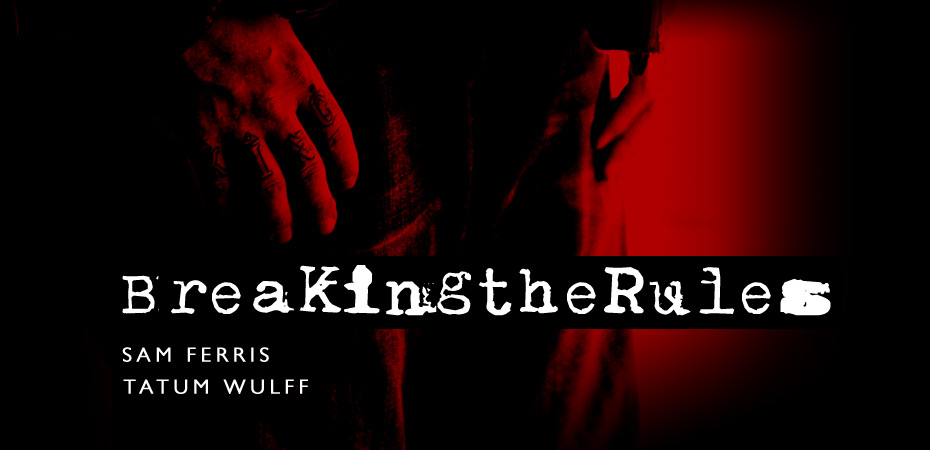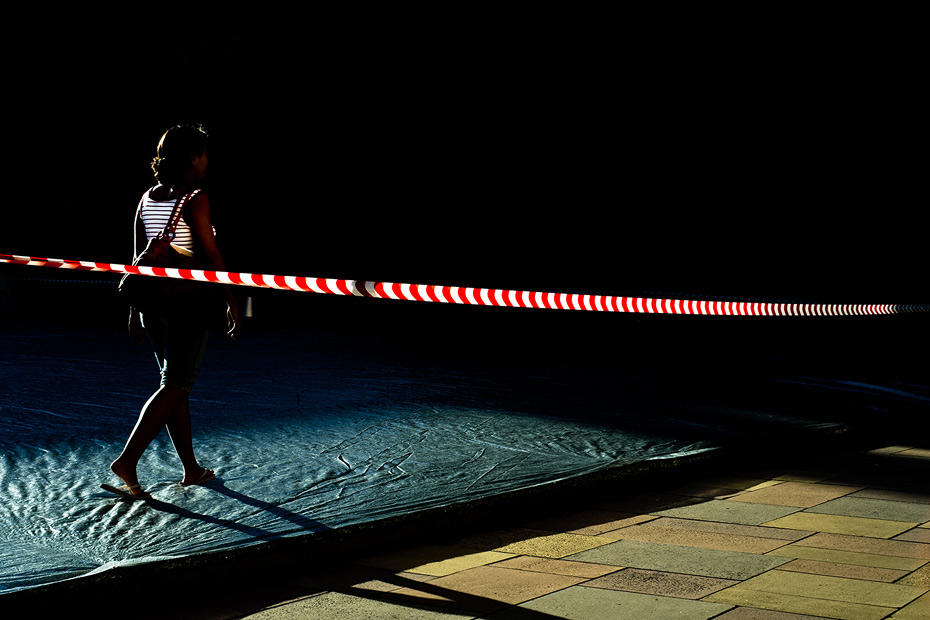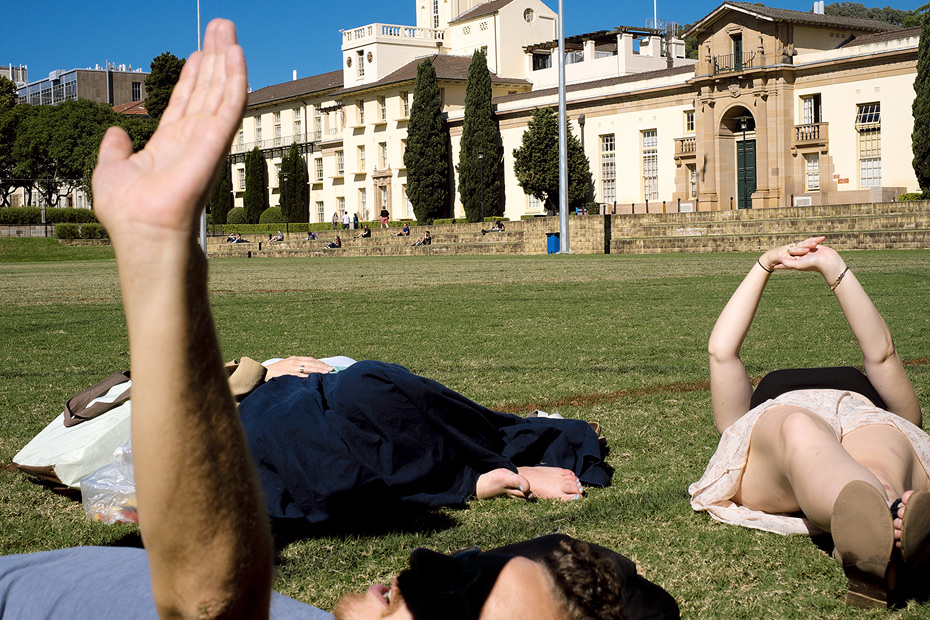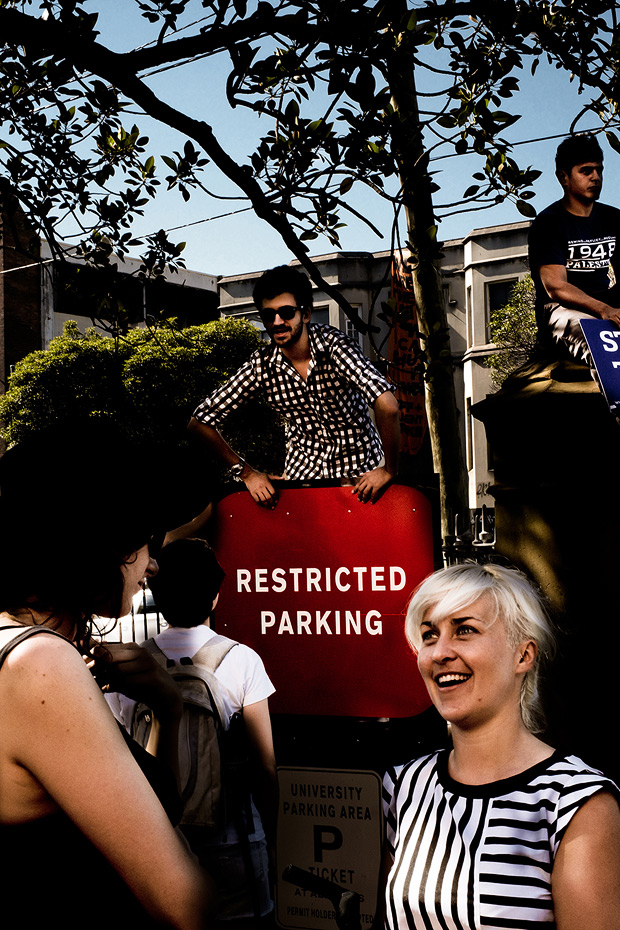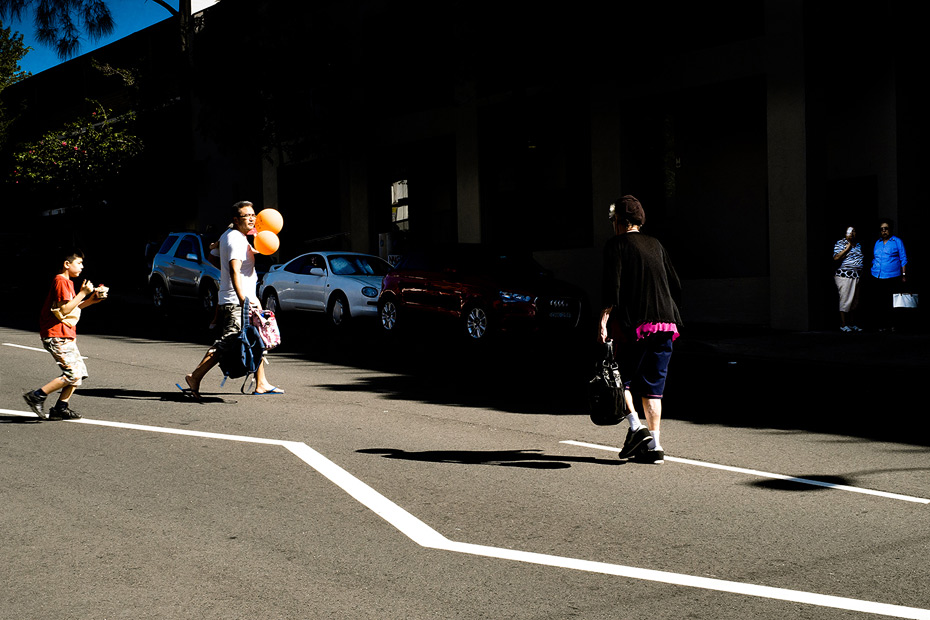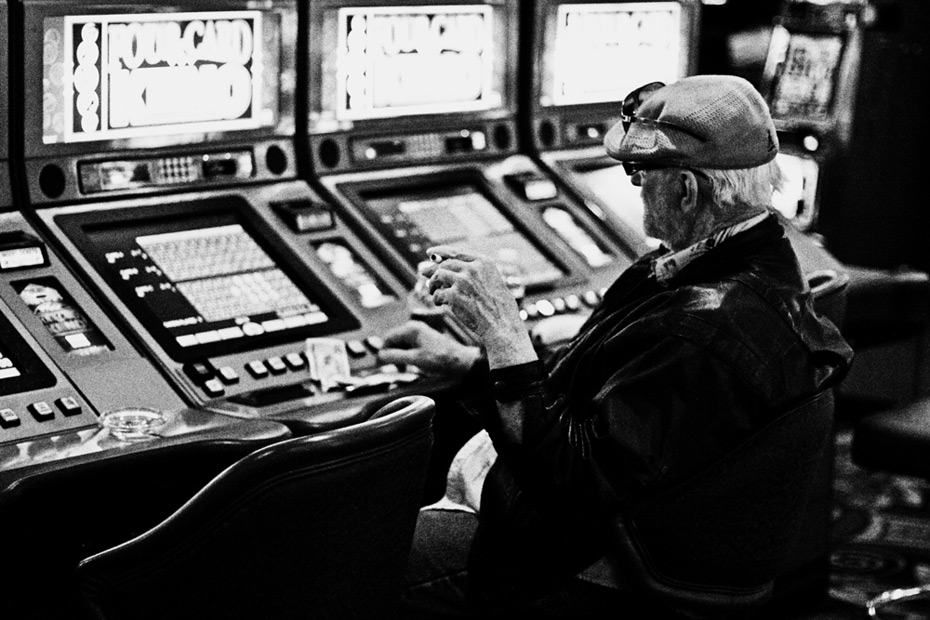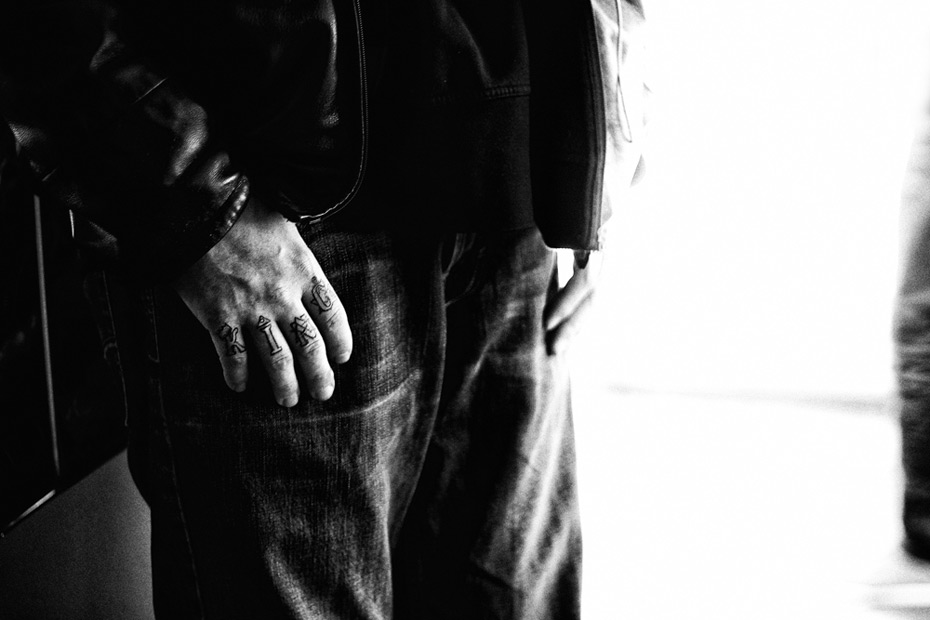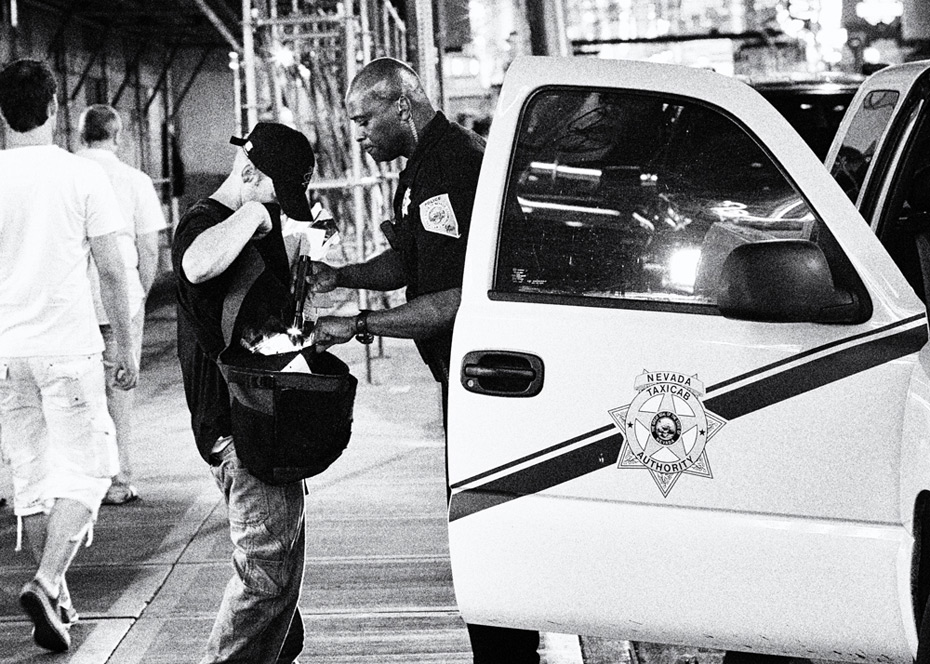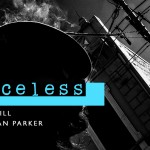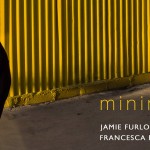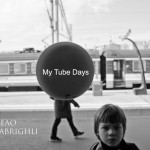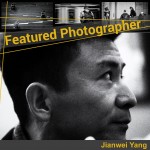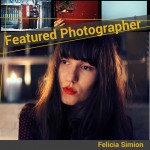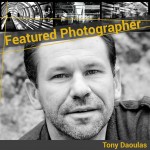BreaKingtheRules with Sam Ferris and Tatum Wulff
The second in a series of collaborative street photography projects by Urban Picnic Street Photography featured on Street View Photography. In this article Sam Ferris talks with Canadian photographer Tatum Wulff. The series of street photos below are based on the idea ‘Breaking the Rules’, and taken in March 2013.
Tatum Wulff: Sam, could you tell us the story of how you initially got started in street photography? What first compelled you to this genre of photography, and how has your work altered or progressed over time?
Sam Ferris: I am not entirely sure why I began taking photos. Around the time I started, I was working and researching at university five to six days a week to try and finish off my PhD thesis. I was fairly miserable and really under a lot of stress. In order to get outside and have a break from my desk, I set about walking to and from the campus and home which took about an hour and a half each way. On these walks, I began to notice things. First of all, it was architecture. I was drawn to the form and design of buildings and became interested in how they engaged public space. I was also fascinated with the lines and how certain surfaces would become luminescent under the radiance of morning and afternoon sunlight. After a while, I brought a compact point-and-shoot camera with me to photograph these structures. I would often change my walking route because I enjoyed the feeling of being lost in suburbia, with only a general direction in mind. This led me through Sydney’s stark industrial areas. There were streets of factories, warehouses; the skeletal remnants of abandoned buildings, construction sites; all machinery and concrete. I found these areas interesting to photograph too because of the alienation I felt walking through them; an environment so bleak and devoid of humanity it was almost a vivid tableau of modern life. At this stage, my photographs too were without human figures in them. And my photography itself, little more than a personal hobby.
In 2011 I lived in an outer arrondissement of Paris. I felt like it was, at least from my Australian perspective, an authentic way to experience the city: existing amongst the locals in a part of Paris not frequented by tourists. My habit of voraciously taking photos with my little point-and-shoot extended to my Paris experience because there was so much that I could observe with the enthralment of a foreigner. I would also walk everywhere in the city. I had a rudimentary map, but I once again enjoyed the sensation of being lost and discovering the alleys, galleries and markets on foot. I would photograph everything and a lot of the photos I took had people framed from afar by the street or its surrounding architectures. There was so much that I found both strange and marvellous about the everyday activities and goings on around me that I felt compelled to photograph it.
Back in Australia, on a whim, I decided to upload some of these images to a photo-sharing site so that I could send the gallery link to my friends and family and have them share my experience of Paris. What I didn’t expect was the generally positive reaction to my photos by people who I didn’t know. Where people had left comments, I noticed one word emerged again and again – ‘street’ – even though a lot of my photos did not actually depict one. Curious, I immediately researched the genre. I was amazed by the images that appeared. It was a very exciting moment for me. Later, I would spend hours every night looking at photos online, reading articles and blogs. Discovering the genre of street photography crystallised my earlier experience of taking photos while walking the streets of Sydney; that there are moments where the ordinary and mundane can be made strange and beautiful through the temporality of the shutter. It perhaps also marked this as the moment when what I was doing with photography shifted from a personal diversion to more of an artistic pursuit.
Tatum Wulff: What other influences drive your passion for street photography?
Sam Ferris: In terms of art in general, I think I have always been interested in it. My dad is an artist and so I grew up surrounded by his paintings and shelves of art books. As a kid, I would love to spend time in his studio; it was cluttered and smelled of oil-paint. My dad was meticulous in the approach he took to work. He would always explain his images to me; drawing little sketches on the thin yellow paper he kept for notes to demonstrate a concept. I learnt how perspective worked; about lines and vanishing points; he explained composition, form, layering and colour pallets too. One thing I distinctly remember is that he would always have a camera – a film Canon SLR – with him when we were driving somewhere and he would often stop to take photos of landscapes, factories and industrial plants, buildings, roads and signs; anything that he felt he could later use in a painting. Years later, I think his influence filters through to the photos I now take.
In strictly photographic terms, even though I became aware of street photography only very recently and feel like I am a complete novice, I feel like I had a head start in some respects of image making. I’m definitely still learning. My work has shifted from being rendered solely in black and white and centring on figures against architectural backgrounds or murals and advertisements to using colour and being concerned with the light in Sydney. Reading photography books – I currently have the compilation Street Photography Now, Josef Koudelka’s Exiles, Think of England by Martin Parr and William Klein’s Paris taking up a significant portion of my coffee table – has been instrumental in broadening my understanding of the potential that photography on the street holds. I have also been inspired by work I’ve seen in Flickr’s Hardcore Street Photography and Street Photography Now groups as well as the individual work of Shane Gray, John Goldsmith, Fabio Costa, Julien Legrand and Baptiste Hauville to name but a few on Urban Picnic.
Tatum Wulff: From a cultural standpoint, has shooting in Sydney had an effect on your style?
Sam Ferris: Well, I think it has. I’ve been here for just over five years now and feel like I’m still discovering Sydney, especially in terms of photography. It is a vibrant and multicultural city, full of life and diversity. I think there is also another side to it though; one that finds the city in a post-Olympic decline. I’ve certainly felt isolated at times here. I think that is why I connect so strongly with the work of Trent Parke, especially his exquisite portrait of the city in the series Dream/ Life. It is body of work that I find at once aesthetically sublime and incredibly visceral. He uses light so beautiful to sketch his vision of Sydney. Some of the images in the Dream/ Life series are almost nightmarishly post-apocalyptic and I connect with them for their bleak rendering of life. For me, I don’t think there is any conceivable way of photographing Sydney today, without considering Parke’s accomplishment. It’s a body of work that I go back to on an almost weekly basis and draw inspiration from time and again. I find myself trying to visit the same locations where he took photos and experiment with the oblique light in mornings and afternoons resulting in various successes and failures. And the light in Sydney has definitely shaped my style. I’m fascinated by the light in the city as it juts through the gaps between buildings in shards that cut through long, dark shadows. It makes colours more brilliant and creates shimmering silhouettes. Recently, by shooting at apertures of between f8 and f16, I’ve found the light can also be useful in cleaning up photos compositionally: I can show a subject and leave the cluttered or unnecessary elements of the image obscured by shadow.
Tatum Wulff: Could you tell us what your experience was like in shooting for this brief, any challenges you encountered, and how the development of the project unfolded for you? What are you trying to communicate to the viewer in your photos?
Sam Ferris: Working to a brief was interesting and not something I had ever done before for street photography. Normally, I go out to shoot with locations in mind that I know will be interesting in terms of light or people, but I tend to be a bit open minded about the sorts of images I might get. I think that it is, perhaps, the most addicting thing about taking photos on the street: you never know what is going to happen. I think Matt Stuart frames it really well in an interview I recently saw: “the lovely thing about street photography . . . is that the best stuff; there’s absolutely no way you could stage or even think of.” So, while I had not worked to a brief before, I was excited about the potential for interpretation and to see how focussing on a particular idea would change the way I might take or look for photos.
With that in mind, my initial idea for ‘breaking the rules’ was to explore certain parts of Sydney at night and see how, perhaps, the guise of darkness permitted people to break the rules with more frequency. After embarking on Friday and Saturday nights for three consecutive weeks on a route that led me from King street in Newtown where I live, to the city itself and then finally through Kings Cross, I managed to capture a number of images that I found interesting but did not fit the brief. Some of the individual shots I got of drunkenness, fights, police and general disorder were, for me, compelling but there was nothing tying them together as a cohesive series. Moreover, I think the style of these photos erred more towards photojournalism than street photography. That is not to say that it was for lack of subjects; it was more a problem with my composition and technical skills when taking photos at night. In any case, these images certainly lacked the witty and surreal prowess of, for example, Maciej Dakowicz’s brilliant Cardiff After Dark series.
After that initial setback, I wasn’t sure where to go next so I asked some friends about their interpretation of ‘breaking the rules’ and we had an enlightening, albeit somewhat inebriated, conversation at the university’s pub about it. We spoke about how rules are different to laws and that we in-fact break the rules – or codes – of the streets every day in the subtle, unnoticeable and sometimes unconscious ways we use or traverse public space. As children we had all walked along a railing or wall for our own amusement or daring; and we had used the pavement itself as an object of play. Moreover, as adults, we now dart through busy traffic to avoid waiting at the lights; we lean against street signs; or walk through vacant lots to take a short-cut home. We all ‘break the rules’ in some sense. So, it now became my goal to capture these subtle kinds of rule breaking and to do so in a way that tested and even ‘broke’ my ‘rules’ for street photography. To improve the chances of capturing these sorts of moments, I knew I needed to get out and shoot as frequently as possible.
Fortunately, this coincided with a resolution of mine to always bring my camera with me when I leave the house. And yet, while completing the brief, I was also extremely busy; extended time to go out and take photos increasingly scarce. I’m studying now, full-time, to become a teacher and also trying to work when I can; so, I often found myself in a classroom while the light outside was beautiful. But that I did have my camera with me everyday at university and that I was sometimes able to find the time between or after class to shoot meant that I was constantly working at the brief. I certainly find the university campus an interesting setting for street photography; there are masses of people of all ages and from all walks of life; and there is a variety of interesting locations with good light. My photos for this brief have actually all been taken in and around the university I study at and in a bizarre art-imitating-life type moment, I was even told off by campus security for taking photos for this project. From the light in the quadrangle streaming upon a girl cutting through a cordoned off section of covered grass to reach class on time; to students enjoying the afternoon sunlight; to protesters assembled at an entrance and sitting atop a wall; to an old woman ambling down the middle of a busy road while a father and children quickly dash across it and a pair of stunned ladies look on, I think I have been able to capture some images that delineate the moments that I see in my life and perhaps at the same time also meet the brief.
Sam Ferris: First of all, Tatum, can you you tell us a little about yourself: where you’re from, how you found your way into street photography, which other photographers you like and why? What you look for on the street? Which cameras you shoot with?
Tatum Wulff: Travel has always played a key role in my life. From an early age, I became accustomed to moving and adjusting to new environments. I grew up in Calgary, Alberta, Canada and lived briefly on Vancouver Island before moving to Vancouver, British Columbia. During the 1990’s, I fulfilled my aspirations to travel and live abroad. Through a series of unplanned events, I eventually found myself calling Japan home, and settled there for around eight years. Having a background in Fine Arts, I was very fortunate to meet a renowned Japanese artist who taught me the intricacies of an ancient art form called Nihonga, or traditional Japanese painting. What I didn’t realize at the time, was that my apprenticeship in painting would eventually provide as a good foundation for my future love of photography. I had already visited places like Israel, China and Brazil, before finally discovering my love for street photography during a trip through the rural countryside of northern Thailand. It was a life changing experience for me to meet people from cultures so different than that of my own. Armed with a couple of film cameras my father had given me before leaving Canada, I finally turned my lens toward capturing the wonderful people I met while backpacking. Moved by the beauty, strength and dignity of such humble people who had very little in the way of material possessions, I became impassioned to tell their stories and celebrate their culture through photography.
In regards to other photographers I like, I have always loved the master of candid photography, Henri Cartier-Bresson. Like other masters in any medium, his work emulates what can be accomplished when one learns to listen to their instinct, and follow it. We can learn and find inspiration through those who have mastered their craft, but ultimately as artists, we have to learn to let our own instincts act as a compass for us to find personal success and fulfillment. Elliot Erwitt is of course also a master of capturing the decisive moment. I love the playfulness and humanity found in a lot of his work. While visiting the Art Gallery of Ontario last year in October, I was deeply inspired by an exhibition of imagery by Josef Sudek. His ability to portray ordinary objects and scenes in such a sublime and beautiful manner left me captivated. James Nachtwey is a photographer I hold great respect for. Not only because his images serve to show us the human consequences of war and the struggle of people living in areas of international conflict, but his humble character is truly admirable. He does not strive to be praised for how good his photography is, his main concern is that there is an emotional response and understanding from people about the importance of what it is he is capturing. I have long loved Steve McCurry for his vibrant colorful portraits of people and his drive to portray both people’s joy and the human struggle. I adore the work of Vivian Maier. I am fascinated by her life as much as I am her work. Aside from other photographers, my earliest influences in art were 19th century European Impressionist painters. More than likely part of my admiration for these innovative artists is that they celebrated the life and beauty of everyday people, which is what I have always gravitated toward in photography.
Street photography for me is a celebration of life and an appreciation of people. I think once you know what it is the moves you in life, it will become second nature for you as a photographer to capture that. It’s all about being true to one’s self and having gratitude.
Currently I shoot with a Canon T2i and after reading an article on Eric Kim’s website, ’10 Things Henri Cartier-Bresson Can Teach You About Street Photography’, listing a number of photography tips, one being to ‘Stick to one lens’, I challenged myself to switch from using my kit lens to only using my 50mm F1.4 on the street. It didn’t take long for me to realize the benefits and I haven’t used my kit lens ever since reading that article. I do at times use a 28mm F1.8 as well, but I feel very comfortable with my 50mm for street. If I do decide at some point I would like to shoot with something that has more range, I have my eye on the Sigma 17-50mm F2.8. I’m not certain if it would suitable for street, but I would like to try it one day. I use Silver EFX Pro for black and white processing.
Sam Ferris: Do you see your personality reflected in your work?
Tatum Wulff: Yes, absolutely. Our life experiences and personal history have a direct effect on our outlook and what we may focus on in life, and as a result, in what and how we shoot. I think core elements of every photographer’s personality are reflected in their work. There are pictures all around us, at any given time anywhere we are. There are moments that will translate to something meaningful for someone, that’s other may dismiss. I also find the style of post processing can at times reflect elements of a photographer’s personality. I don’t know the author of this quote, but it really holds true for me: “Often times, photographs reveal more about the photographer than the subjects themselves“.
Sam Ferris: What inspired you to arrive at the idea of ‘breaking the rules’ for the brief?
Tatum Wulff: I saw a young child standing on a grass lawn between two condominium buildings, he was playing with a sign hanging from a chain that read, ‘Private Property – No Trespassing’. I centered him holding the sign when I photographed him, that’s when the idea of breaking the rules crossed my mind for the brief. The child was innocently breaking a rule by playing on private property, and I had broken one the standard rules of photography by centering my subject.
Initially I planned to interpret the brief in a literal sense by shooting pictures that broke some of the standard rules of photography, such as the rule of thirds, focus and leading lines, but I decided to challenge myself to shoot the brief in the visual context of my subjects breaking rules. I actually found this very challenging, as my interpretation varied between ideas such as breaking the rules, unwritten or otherwise, which society places on us to breaking rules we set for ourselves.
Sam Ferris: Are there any projects in general that you’re working on or itching to work on in the future?
Tatum Wulff: Sam, thanks for asking. Yes, I am in the process of creating a book documenting my travels and the diverse people and cultures that had such a life changing impact on me. This involves sifting through a backlog of negatives to scan and edit. I have an Epson V500 for the job, hopefully this will help in providing for some good results.
Conclusion:
Tatum Wulff
“Working with Sam on this brief was a very interesting exercise. I really enjoyed the process and overcoming any unforeseen challenges that came with it. I think the final results we produced are very telling of just how unique our viewpoints and interpretations are as photographers. I know Sam for his compelling and classic black and white street work so I was very intrigued to see he chose color for the brief. I think the images he produced for the brief are a great visual example of the range and diversity of his talent.
What makes his images so striking to me are the strong graphical elements combined with his clever use of bold, vibrant colors. I also love Sam’s apt ability to capture a visually stimulating interplay of geometry between his subjects within their environment. His image of the family crossing the road with a child holding balloons really exemplifies this. The family walks across the middle of the road while an interesting character who seems to have grabbed the attention of others, walks toward them. For me this can be symbolic of people we may cross paths with when we break the rules and go our own way. The fact that the viewer is the only one involved in the shot who cannot see the persons face further piques my curiosity and adds to the story of the shot. Each one of his images shows a unique interpretation of the brief. I find it compelling that not only did he use color while I shot in black and white, but his series was shot in the daytime while mine happened to be shot at night.
Since joining UPSP I have met some very inspiring photographers who have introduced me to exploring other styles of street photography. Collaborating with Sam on this brief has further motivated me to continue to be open minded in how and what I shoot. I am really happy with the outcome of our collaboration and glad we had the chance to work together.”
Sam Ferris
“I greatly enjoyed working with Tatum, getting her input and ideas, and seeing her interpretation of ‘breaking the rules’ come to fruition. I have been following her photos on various sites for a while now and admire the quality of black and white images that she creates. My favourite images from her, in the past, have always been of children. I think that children as subjects can be brilliant in general: they engage with the world in unique ways; seeing details that adults often miss; and they wear their emotions visibly. I think Tatum’s photos really capture these qualities and what might be considered the ‘essence’ of childhood. As such, her work often reminds me a lot of Doisneau’s.
Now, the reason I bring this up is because Tatum mentioned to me in an email that her observation and photographing of a child innocently ‘breaking the rules’ inspired her to come up with the idea for the brief. What is especially interesting for me, then, is to consider the direction her interpretation has taken due, perhaps, to the city in which she shot in. Instead of Doisneau, this series recalls – for me – aspects of the work of Frank and Klein in their respective portraits of American life. I really think Tatum has rendered an experience of Las Vegas into a cohesive set of images. In a city that is bursting with glitz and neon technicolour, I find her black and white style distils the darker, grittier side of the city to the surface while focussing the viewer’s attention on small details: a cigarette; a flashlight; a tattoo. Perhaps my favourite image from Tatum’s interpretation of the brief is the old gambler sitting before the pokies machines with his cigarette cocked in his hand and wearing two pairs of glasses. He almost seems entranced by the lights in front of him and this is accentuated by the shallow depth of field Tatum has used to place the machines out of focus; with their text slightly obscured and lights bleeding together in a sensory mass. The graininess also works well throughout Tatum’s images for the brief, but it is extremely poignant here as it creates a beautiful tonality between light and dark elements.”
By Tatum Wulff, Sam Ferris
Source: Urban Picnic Street Photography
Find more interesting discussions in our SVP-Forum.
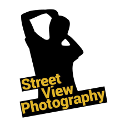
 Follow
Follow
